Froome Talfourd was an extremely active and influential member of the Anglican Church in Moore. He was instrumental in establishing the original plans for Sutherland’s Trinity Church in 1835. However, in 1840, Froome donated sufficient land for a church and cemetery in Froomefield. Every year Froome Talfourd’s parents would send him £30 from England. It was this money that he used in 1840 to build St. Mary’s Episcopal Church. The small frame building was erected right near where the St Clair Parkway passes through Froomefield. By 1844, the church was in need of repairs, and still had a small debt. Froome Talfourd decided to give the church to the Diocese of Toronto and the exchange was made on April 11th, 1845. Later, the church would be turned over to the Diocese of Huron in 1857.
In 1868, the church was again in need of extensive renovations. A contract was agreed to with George Proctor and Andrew Todd for rebuilding the church. It opened again that year. The Sarnia Observer records that Rev. Armstrong and Rev. J.G.R. Salter held opening services at which collections for the building fund were taken. The church could seat 100 persons and it was built of wood in the Gothic style for $900. It opened its doors without debt, largely due to the generosity of Froome Talfourd. The church was consecrated a year later in 1869 by the Bishop of Michigan since the Bishop of Huron was ill. The occasion was called an important symbol of the unity of the American and Canadian Episcopal Church. Many neighbouring clergy were present at the ceremony and the service was so crowded that only half the congregation could enter the church. It was about that same time that Froome returned to England for a visit which turned out to be permanent. In thankfulness for her brother’s safe return to England, Miss Ann Talfourd presented St. Mary’s with a silver communion flagon in July 1868. That flagon has been donated to Moore Museum’s collection of local church heritage artifacts.
The Sutherland Centennial booklet recounts that the little frame church closed some years later. In the history of the parish it is stated that the frame building was used until at least 1897, when it was moved down to the Aamjiwnaang Reserve by Sarnia. The Church, renamed as St. Peter, was then operated from St. John’s Anglican Church, Sarnia, as a mission until the 1920’s when it was closed. This decision was made as part of an agreement that both the Anglican Church on the Aamjiwnaang Reserve, and the United Church at Kettle Point, would close, so the Christians in those areas would not be split between two denominations. The pews went to Sarnia’s St. George Anglican Church in storage.
With the church gone, the graveyard became overgrown and desolate. The white slab tombstones fell down, and the location of many graves were lost. In 1956, the Women’s Institute erected a memorial cairn and grouped the stones around it. Froome Talfourd’s first wife is buried there near the memorial cairn which marks the former church site. Prominent families in St. Mary’s history are the Rodeys, Majors, Gorolings, Stones, Warwicks, Turnbulls, Harpers, Dobsens, Millers and Reids.

